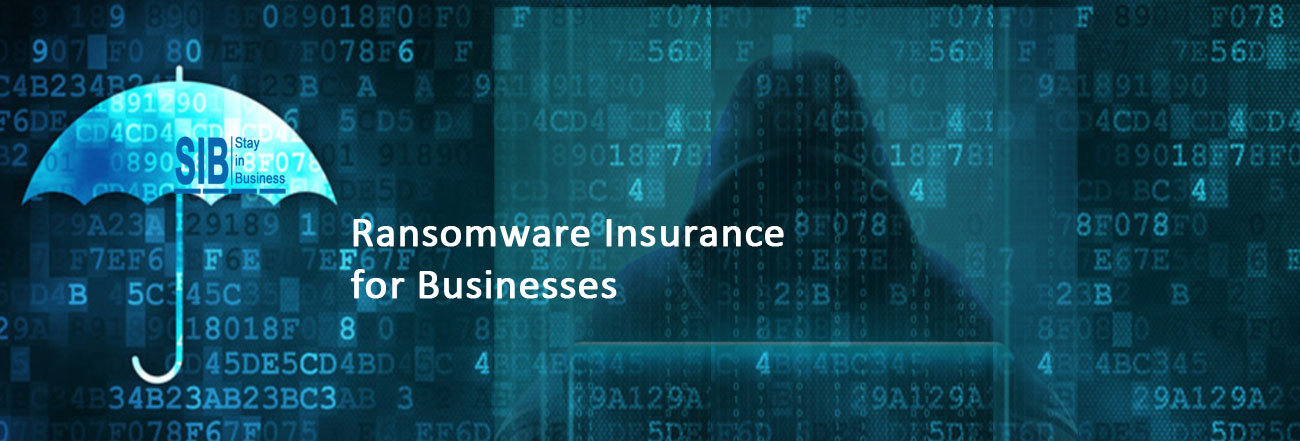Ransomware Insurance for Businesses

Ransomware attacks have built a reputation of consistently disrupting operations across industries and sectors – be it oil and gas, livestock agriculture or even maritime transport. Businesses are often confronted with the harsh reality of saving their assets from irreparable damage and are obliged to shell out good money to avert such incidents in the future.
Typically in such crisis situations, apart from setting their inhouse IT teams onto the task, businesses enlist the support of federal and legal authorities, and third party BCDR vendors. But the single most defining factor that determines the survival of a business against the onslaught of a disaster is its coverage plan.
Organizations subscribe to comprehensive coverage programs primarily to safeguard their assets and resources against cybercrimes including ransomware attacks that exploit vulnerabilities in target systems. The perpetrators of such crimes release these compromised systems only in exchange for a huge ransom that imply substantial monetary losses for the company. Such potential damage has made it imperative for organizations to insure their commercial interests against these attacks.
Surge in Cybersecurity Insurance
Globally renowned insurance providers confirm that over the last two to three years, they have witnessed an exponential growth in current customers cashing their coverage plans to offset damages incurred from ransomware attacks which are the root cause for nearly twenty percent of all cyber insurance petitions.
Insurance against cybercrimes such as ransomware has always been a critical component of IT strategy for businesses that rely heavily on data. But the advent and adoption of new and emerging technologies in recent years have expanded the market for these insurance packages across multiple industries and sectors as organizations are having to operate with amplified attack surfaces.
Businesses customize their cybercrime insurance plans depending on the nature, scale and complexity of their operations as well as the risk exposure of their mission critical processes to cyberattacks such as ransomware. As a result, pricing differs drastically by many hundreds, thousands or even millions of dollars for different businesses depending on the extent of protection needed. Statistics state that nearly half of all insurance claims account for covering financial losses from cybercrime ransoms.
However, federal authorities such as the FBI are of the opinion that ransom payments should be avoided as far as possible as they only give cyber criminals the incentive to perpetrate these crimes in the future.
Until two years ago, coverage subscriptions for businesses annually cost anywhere between one and two thousand dollars for financial protection against cybercrime related liabilities of roughly a million dollars.
Cumulating Complexities and Costs for Cybercrime Coverage
Ransomware attacks have been steadily evolving into a potent cyberthreat and have developed the uncanny knack of sneaking time and again even into the most fortified systems. The extent of damage that they can inflict upon infrastructure has also grown exponentially over the years. As a result, costs have skyrocketed. The last year alone saw business expenditure on cybercrime coverage increase by nearly one fourth.
Insurance companies are also curbing their expenses by imposing more stringent eligibility criteria for selecting companies that want to avail their benefits.
Some of the most sought after insurance providers make it compulsory that companies meet rigorous norms such as extensive employee protection against email phishing and short turnaround times – ideally between a day to a week – for security patch deployment.
Given the frequency of their occurrence, most insurance programs are oriented towards in-depth protection against ransomware attacks with elaborate and diverse underwriting options. The extent of coverage companies can avail is typically a function of their ability to satisfy the numerous checks and controls imposed by insurance providers.
Cybersecurity specialists also strongly advice companies against a one size fits all approach to ransomware coverage which often leads to a hasty transfer of risk to insurance providers without adequate forethought. Businesses are often lured by this option when they try to circumvent more time consuming approaches.
The US government also recently confirmed its intention to categorize ransomware attacks separately, just like in the case of terrorist attacks, especially when the impact is countrywide. Insurance providers can exploit this initiative to excuse themselves from paying out coverage claims as businesses would have to insure themselves separately against ransomware attacks, similar to insurance against terrorist attacks that seldom protects against warlike incidents. The growing concern is that providers can absolve themselves of any obligation to payout ransomware insurance claims if they can define the incident as either a terrorist attack or one that threatens national security.
Other Alternatives
The IT team provides the primary layer of protection, regardless of the organization’s stance on cybercrime coverage. Companies often outsource cybersecurity responsibilities to third party vendors peopled by specialized personnel adept at dealing with such incidents.
However, authorities on the subject reiterate the importance of roping in federal bodies such as the government, FBI or police from the initial stages. Cyber attacks fall primarily under the jurisdiction of the FBI that consists of divisions such as IC3 and NCIJTF where incidents can be reported. Businesses can also register their grievances with US-CERT and Homeland Security’s NCCIC, either through the internet or via phone.
Experts highly recommend reaching out to the government as a first response. Businesses can’t afford to stay disconnected. Reciprocity between private and public sectors plays a crucial role.
Categories: Crisis Management, Data Security, Disaster Recovery Planning, Identity Protection
